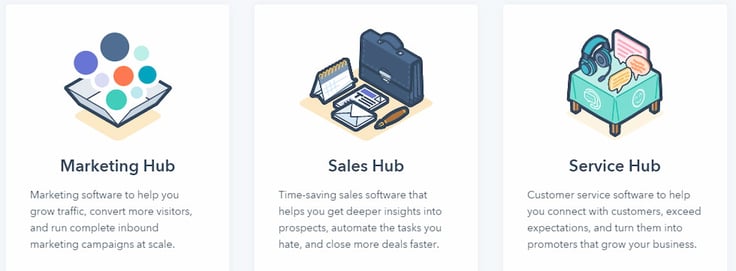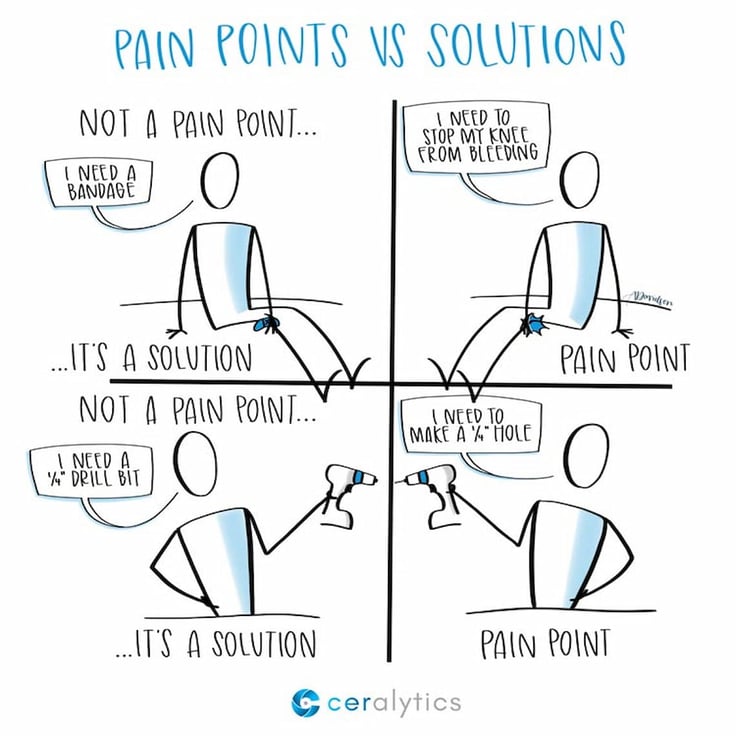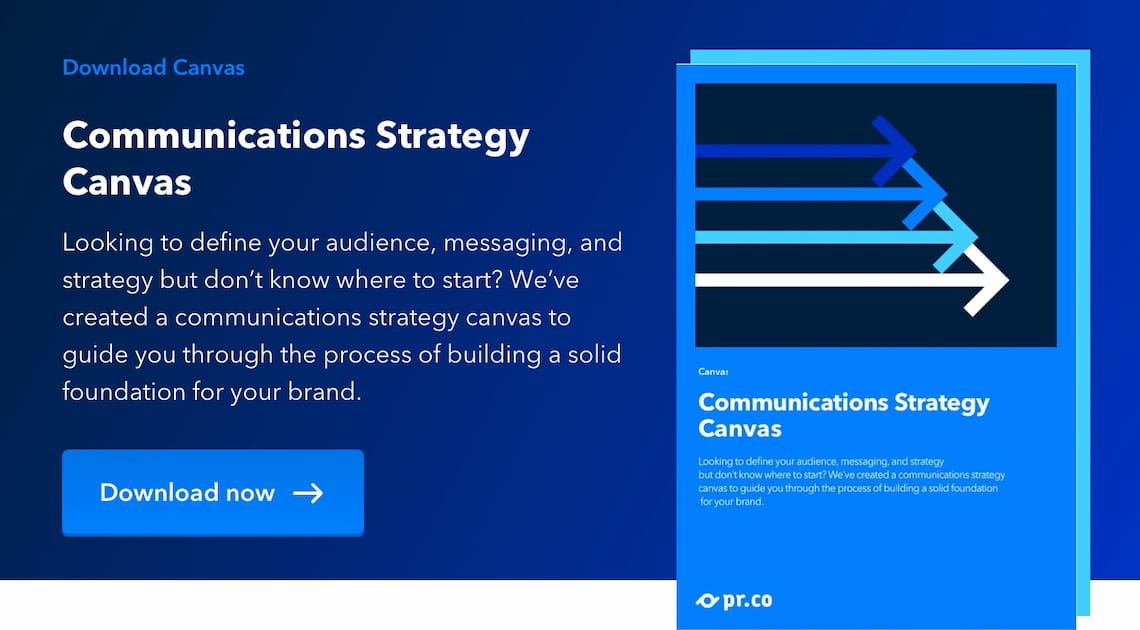It's no secret our attention spans have decreased dramatically over the past couple of decades. With the increasing amount of content and the accelerated news cycles, our attention span is exhausted and the urge for 'newness' causes us to switch between topics regularly. The bad news? There aren't any signs of this improving. The good news? Brands have learned that in order to age well, they must take the focus off themselves. Below, Brandon Andersen, co-founder of Ceralytics explains what makes brands successful.
.jpg?width=736&name=nicholas-green-nPz8akkUmDI-unsplash%20(1).jpg)
The attention span of an adult is 8 seconds. You’ve already been on this page for about 7 seconds, so I have only one second to…
Well, this sucks.
How are you supposed to keep somebody engaged on your content if they’re looking to move to something else every 8 damn seconds?!
This is one of the greatest challenges we as communicators have. In a world of goldfish-level attention spans, we need to hook our audience, engage them in our content, and keep them engaged through the call-to-action. But how?
A major first step is taking emphasis OFF of our brands.
.jpg?width=736&name=328403-stefan-cosma-0gO3-b-5m80-unsplash-aade58-original-1566920332%20(1).jpg)
You’re doing it wrong. We’re ALL doing it wrong.
Brand. Brand. Brand. It’s drilled into us. So when we create any kind of communications for our company, we obviously lead with our brand.
Company ABC, the industry-leading, best-in-class software solution for mapping acne on middle-aged men…
Yeah, other than the acne part, I bet this excerpt looks familiar. It’s probably the bones of every press release your company has ever published.
As communicators, we’re self-centered; we care about our brand. That’s our job, right? And we write that way. Even “benefit-focused” writing too often focuses on the benefit your products and services give someone.
Well, I’m climbing on my soapbox, and with the loudest voice I can muster, I am telling you the terrible unspoken truth about marketing and communications:
NO ONE GIVES A S*** ABOUT YOUR BRAND.
You’ve got 8 seconds to get someone’s attention, and every 8 seconds they’re looking to do something better than read your content.
And do you know what your readers care about?
It’s not you.
It’s not your brand.
It’s not your products or services.
It’s not even the benefits you’re trying to craft into every piece of collateral.
They care about THEMSELVES. THEY have needs, and THEY want to solve problems that THEY’RE facing in THEIR jobs. So when you are finally privileged to get their attention, why in the hell do you talk about YOURSELF?
Because you’ve been trained to. We’ve all been trained to.
Who is the hero?
Brands believe that they are the hero in their customers’ stories. They believe their products make their customers successful, and as a result, those products should be touted from the highest mountain tops.
But every reader who comes to your site or reads a piece of your content doesn’t want a hero to save them. THEY want to be the hero. If someone rescues them, it means they’re the victim. And no one wants to be a victim.
Your customer wants to feel empowered, not reliant on your products. They’re living their story right now, and your brand isn’t, nor will it ever be, the hero in it.
.jpg?width=736&name=328381-esteban-lopez-6yjAC0-OwkA-unsplash-585256-original-1566906864%20(1).jpg)
But brand is everything!
Branding is absolutely important. But branding and talking about your brand are two totally different things.
Take franchising, where brands are king.
Franchise brands sell franchises to franchisees on the promise that the business model and the brand recognition are worth more than starting a company from scratch. And franchisees pay a lot to use a franchise brand.
But David Chapman, the CEO of a franchise PR agency, sees things differently.
“Franchises succeed largely because of their brand’s strength and recognition. But in franchise marketing, they need to focus on the entrepreneur who is buying a franchise. That entrepreneur is putting their neck out to be the hero of their own story. All too frequently brands lose potential franchisees’ trust and interest by being self-serving and even gloating in their content.”
“And it’s not just franchising. In every industry, whether B2B, B2C, non-profit, and even government, audiences want a sidekick, not a hero.”
A strong brand develops trust, but even strong brands who talk about themselves all the time don’t keep audiences engaged. In fact, some of the most successful content brands do not talk about themselves much at all.
For example, notice how HubSpot calls out products on their homepage:

Notice the difference between the old copy and the new homepage? How do you feel when you read them? One empowers while the other gloats.
Focusing on your customers’ needs, and empowering them as the hero helps build trust, and makes your brand stand out.
So, don’t talk about your brand to build your brand. It seems crazy, but it actually works. Here’s how it breaks down.
Make your audience the hero
In order to engage your audience well, you need to write directly for them and their needs. You need to make them the hero.
When a potential customer comes to your site, their goal is not to learn more about your brand. Nor is it to compare how you stack up against your competition.
Your audience’s main goal when they come to your site is to solve a problem they have.
Learning about your brand and comparing you to your competition are just steps that may need to happen when solving that main problem.
In your communications efforts, your goal should not be to inform. It should be to take someone from a painful state to a resolved state. If you do it really well, and genuinely deliver a good experience, you can take them to an elated state.
This is especially true when it comes to content marketing.
Content marketing is all about creating helpful content that helps solve a customer’s pain point. Best selling author and content marketing guru Jay Baer describes being a YOUtility - creating helpful content that people would be willing to pay for, for free. (He wrote a book about it, and if you haven’t read it, I highly recommend it.)
The last thing your audience wants when consuming helpful content is a sales pitch or a song and dance about the greatness of your brand. But how many blog posts does your company have that spend the majority or even 25% of the post just talking about what your brand can do for a customer?
.jpg?width=736&name=328397-davide-ragusa-gcDwzUGuUoI-unsplash-0f8cee-original-1566919590%20(1).jpg)
What does writing for your audience look like?
Here are some examples of messages that use a brand-centric and customer-centric POV.
Brand-centric
The A54 is a premium condenser microphone that features 24-bit broadcast quality sound, a compact design, and plug ‘n play operation. It’s the essential microphone you’d expect from ABC Microphones.
Customer-centric
Record broadcast quality sound at a fraction of the price of other professional microphones. And don’t worry about fussing with a complicated setup. Just plug the microphone in, and you’re ready to start recording your next podcast, sound great on your next call, or stream directly to Twitch.
The brand-centric message tells you a lot about the microphone. It’s feature-forward and for some people may be just what they need.
The customer-centric message focuses not only on the benefits, but it’s directly addressing pain points the customer has: needing to have broadcast quality sound, not having the time or experience to set up something complicated, and getting them rolling with their true pain point - they want to record great things to share with others.
Always keep your customer’s pain points in mind
A surefire way to make sure you are staying customer-centric in your writing is to commit yourself to address your customer’s true pain points. Don’t mistake these with the solutions you want to hock. This graphic sums up the differences.
 If you keep the customer’s true pain points in mind, you’ll find that you will not only keep your content centered on the audience but will position your solutions to those problems in a more organic way that doesn’t come across as sales-y.
If you keep the customer’s true pain points in mind, you’ll find that you will not only keep your content centered on the audience but will position your solutions to those problems in a more organic way that doesn’t come across as sales-y.Build your brand by not talking about your brand
It feels like an oxymoron, but not talking about your brand, and instead focusing on making your customer the hero of the story you’re telling, will actually help develop more trust in your brand.
Take a look at the last few pieces of content you’ve written. What’s the focus of the content? Is it truly the audience or is it the brand? If it’s the brand, take a minute and rewrite just one paragraph to make it focus on the audience instead. Now read it again. What type of emotional impact does the new content have on you as a reader. Hopefully, it now comes across as more empowering, because you’ve just made the reader the hero.

Brandon Andersen is the founder of Brandon Andersen Consulting and co-founder of Ceralytics, a content intelligence platform. He is also the former Director of Marketing at Cision. With more than 20 years of experience, Brandon specializes in digital transformation and implementation of AI in organizations of all sizes.. Connect on LinkedIn or send an email






